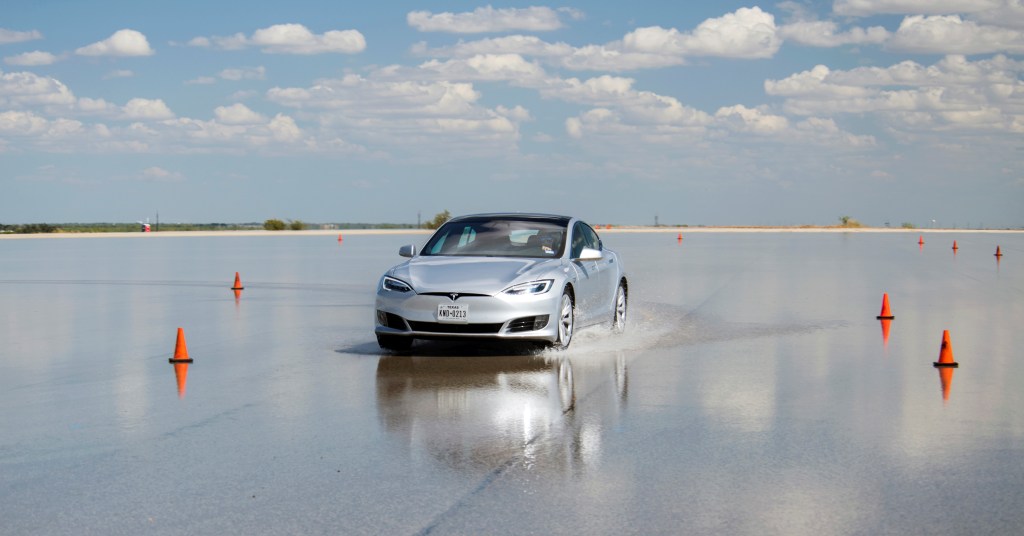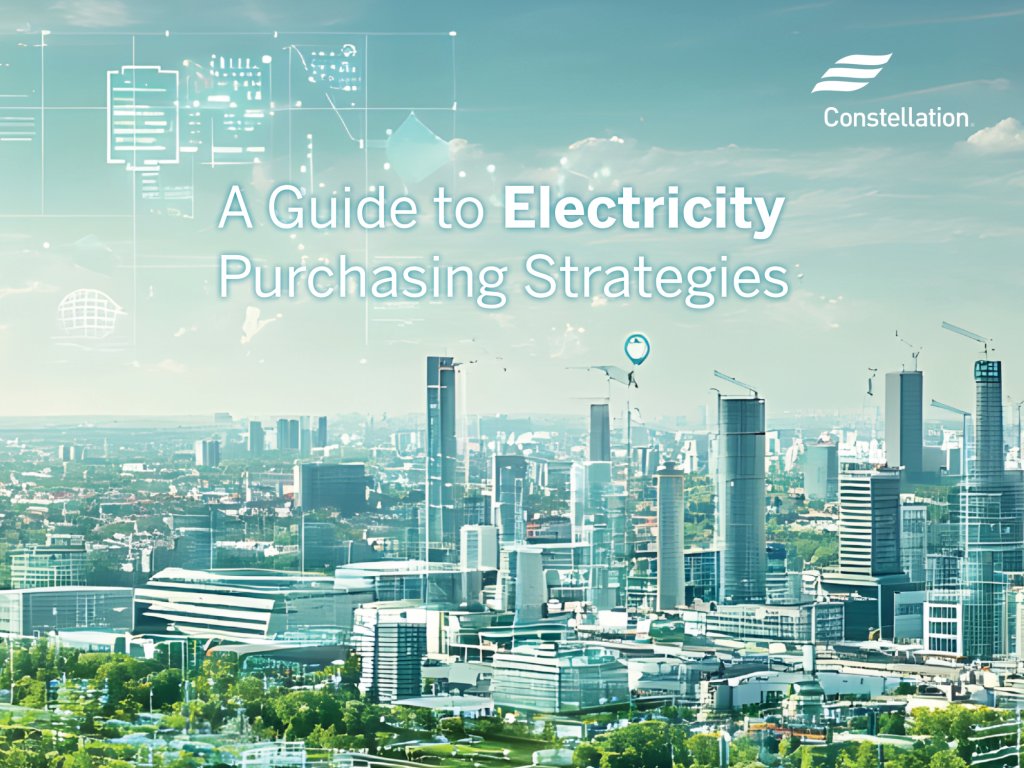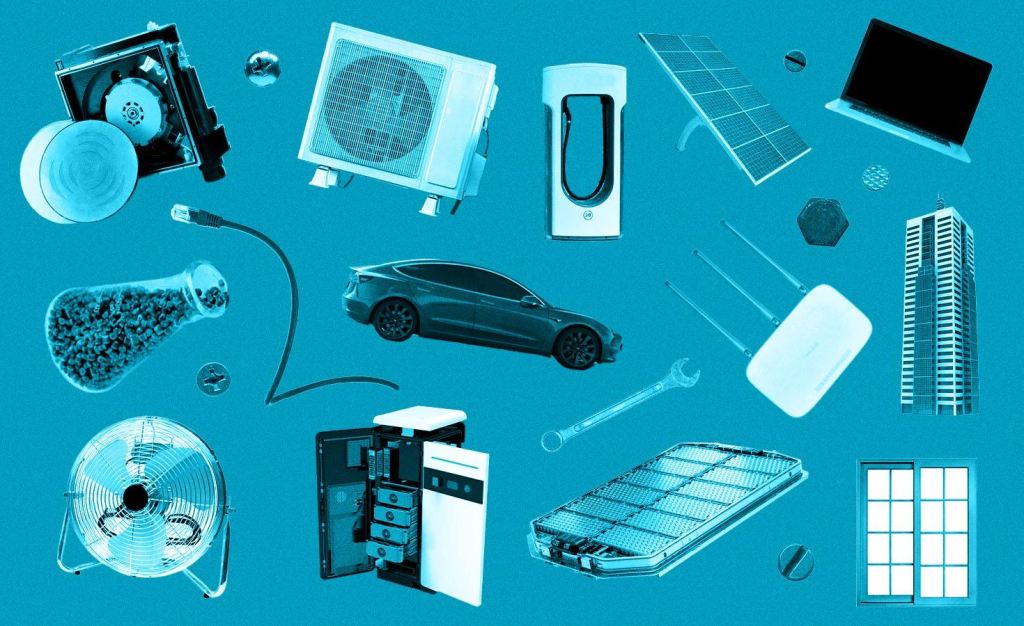10 questions for Goodyear's CTO
We chat with Goodyear Chief Technology Officer Chris Helsel about the role of tires in the electric vehicle revolution, connected tire tech and replacing petroleum material with soybean oil. Read More

In the rapidly changing world of transportation — as vehicles get batteries and start driving themselves — not many think about the humble tire. But the tire industry is navigating the same types of technologies and innovations that its partners — the automakers — are as transportation moves to electric, autonomous and connected.
The leader responsible for how tire giant Goodyear navigates those technologies is its chief technology officer, Chris Helsel, who’s been at the company for 24 years and oversees the company’s tire tech. He also oversees what he calls “beyond tires,” or putting intelligence — sensors, data tools and artificial intelligence — into Goodyear’s tire services.
Earlier this month, GreenBiz sat down with Helsel to chat about everything from Goodyear’s role in the electric vehicle transition, to circular economy innovations, to how he thinks COVID has affected transportation sustainability goals. The conversation has been lightly edited for length and clarity.

Katie Fehrenbacher: What are the most important ways that technology and innovation are driving the tire business at Goodyear?
Chris Helsel: First, in most every tire, there’s what you might call the trade-off triangle. The No. 1 thing is how much technology goes into resolving that.
It comes down to how well you can provide good long-lasting tread wear, because you want the tire to last a very long time to give people a good value and at the same time that’s also good for the environment. The longer that a tire can stay in service and perform well, the less of those tires need to be repurposed at the end of life.
The second thing is the fuel economy and that is done through the rolling resistance. Basically, every time tires roll, ;energy is lost as they get loaded and unloaded as they go through that footprint.
The third is the trade-off of traction. Making sure that under snow, ice, wet or dry conditions, you maintain and can transmit those forces to make sure that the vehicle can operate safely.
So t’s how you play those three trade-offs: tread wear; fuel economy; and traction. It’s really not top of mind for people, but that’s the real technical challenge for how you deliver a premium type tire for a consumer.
Fehrenbacher: In terms of fuel economy, which can save consumers and businesses on fuel costs, how important are these innovations? Do you have data points around fuel savings for customers?
Helsel: I would say, No. 1, if you think about it, what the rolling resistance translates to is reduced greenhouse gas and improved fuel efficiency. There are about 260 million vehicles on American roads, and a better rolling resistance, let’s say of the order of 10 percent, could mean above a billion fewer gallons of gas consumed annually. It’s a big number if you think about it and the impact it can have, and it’s because of that leveraging of a significant number of vehicles. So that’s through the design of the rolling resistance.
The second thing that’s maybe not quite as intuitive is the amount of fuel, and it’s about an equal amount, that can be saved by having the right inflation in your tires. Actually, it’s very difficult to overcome with design what’s lost simply by not keeping your tires inflated. If you kept your tires inflated, it’s been estimated that if everyone was at their recommended inflation, that would save about 1.5 billion gallons per year, or 4 million gallons a day. So it would have a very big impact.

Fehrenbacher: Can you tell me more about Goodyear’s fleet services?
Helsel: With respect to fleets, I’ll just use the North America example. We have a footprint of thousands of locations where there is a drive up and on-road service for fleets.
But what’s more ideal is if we can prevent an on-road event. And one of the ways in which we can help provide less on-road events is by helping them keep air in their tires. If they have an injury to their tire, let’s say it’s a slow leak, we can monitor those tires with intelligent sensors, remotely pull the data, run algorithms on it, use historical data and we can push them an alert, whether directly to the driver or to the fleet manager. An alert could say, “Hey, next time you make a stop, please stop at location X and go get some service done on that tire.”
In that way, we help drive, through those intelligent solutions, better maintenance of tires, keeping the air in them and providing better long-lasting tread wear and better fuel economy. It also adds to safety, because of less on-road breakdowns and less service needs.
Fehrenbacher: Does that use AI and real-time monitoring?
Helsel: Correct, it’s real-time monitoring of the vehicle. It’s done through an actual sensor that is put on the wheel or on the backside of the tire. What we’re pulling is temperature, pressure and other accelerations. From that, it’s put up into the cloud and we run those algorithms, which are a form of artificial intelligence. Those algorithms have in them those inputs as well as some key information about the tire itself. And because we’re doing those across many vehicles, it has the intelligence of making a recommendation.
Fehrenbacher: In terms of end-of-life management and circular systems, how is Goodyear navigating that?
Helsel: I think globally, 80 to 90 percent of tires at end of life are repurposed. Now the typical repurposing of tires is into energy, like energy being used in cement kilns or being repurposed into a downstream product like materials used in asphalt or rubber blocks for parked vehicles. But the main thing to think about with respect to tires is No. 1, 80/90 percent are being repurposed.
However, I think the opportunity now is how do we make that repurposing into more of the same like applications or maybe even if you could imagine upstream. That’s what we’re doing as an industry — really investigating things like how can we use a reclaimed tire for raw materials, for example reclaiming some of the oils or reclaiming some of the carbon black that was in the tire.
This is quite an interesting area for a lot of startups, so we work a lot with startups trying to develop and repurpose some of those recovered rubbers and raw materials. The most I see in our products is where we can reuse some of the ground tires in some of our retread products.
It’s still a bit of a challenge to recover the polymers and reuse it as a polymer. They tend to get reused as a stiffener in the rubber and because of that, you can’t quite use it 100 percent and you need to use it in small parts and that gets into the details of the development period.
Fehrenbacher: In terms of startups, does Goodyear have a formal startup program or is it more organic?
Helsel: We actually announced at CES at the beginning of 2020 a corporate venture fund, and we actually have that as one of our tools in which we partner with startups. The idea is that as a corporate partner we’re not looking to be lead investors, but as someone who can help them take their ideas forward and try their ideas and if they’re hitting then bring them to scale quickly. We can take a small position to help fund those activities for startups and knowing they’re awful tight on their resources.
The second thing we do is to partner with universities, and we do that for two reasons. One is to get these types of technologies, and two is to get the flow of the people who ultimately might have worked on such a project. They might come in and become part of our associates.
And third, there are standalone startups, just like any other supplier, they would be bringing in materials for us to evaluate. We’re helping them understand some of the features of those materials that need improvement and then figuring out where they could be applied in our different tires.
Fehrenbacher: Goodyear has been working on replacing petroleum oil with soybean oils. Can you talk more about that program?
Helsel: That’s been a real nice innovation for us and a nice collaboration outside of our normal tire industry. We started with the soybean board a few years back with the idea [that] we could evaluate soybean oil and how it could be used instead of petroleum. Since then, we’ve been putting it into high-volume tires and lines. In 2019, we nearly doubled the amount of soybean oil that we’re using now in place of petroleum. It’s a win-win.
If you think across your stakeholders, you want a certain performance, and you want a return to your shareholders. But there’s also the environment and our own associates that feel good about these products. The real win on the soybean oil is it’s a byproduct of the processing of the bean. What we find is it gives a pliability to the rubber at low temperatures, which gives a better grip. So it makes for more safety and more traction in snow and ice.
It’s a win-win. But of course, we’re also replacing petroleum.
Fehrenbacher: What’s Goodyear’s role in the zero-emission vehicle transition of your customers?
Helsel: No. 1 is the rolling resistance, and that’s been pulled by CAFE requirements in the past. But now for our new OE [original equipment] fitments, we see that the EV is taking a huge chunk of that work.
You need tires that perform on those vehicles. What we find is that with EVs, they have a new challenge. The trade-off on an electric vehicle is, of course the range, which ties directly into the rolling resistance, just like it’s tied into fuel economy.
Secondly is the tread wear but also the durability because the [electric] vehicles tend to be heavier and the heavier those vehicles are, the more loading and taxing they put on the tire. That makes the tread wear all that more difficult to maintain along with that rolling resistance and delivering something that’s both long-lasting, durable and has fuel economy. And the last thing is that traction requirement especially gets difficult because of the high torque that these vehicles are capable of.
So what we do to enable the adoption of EVs is come up with products that can deliver an even higher level of standards in those areas. Because if people are dissatisfied with the performance of the vehicle, that probably taxes or slows down EV adoption. People may not think about it, but because the tire is the connection to the road, it dictates a lot around the performance, feel and how people enjoy the drive. So we really have a role here and that is a role to deliver that same seamless performance in an EV as [one running on an internal combustion engine].
The last thing is there are challenges because there is no engine noise, and the tires need to be all the more quiet. You don’t want to be sitting in your vehicle and listening to the roar of the road through the tires.
Also things like aerodynamics, because you’re really trying to optimize the range of these vehicles, so you get beyond the normal rolling resistance and get into aerodynamics. Additionally, even potentially the mass of the tire, that rotating inertia.
So you really have to raise your game in the different ways in which you can impact that range.
Fehrenbacher: How has COVID and the recession impacted sustainability goals?
Helsel: When this all started, you started saying, “Geez, how is the industry going to react?” And by industry, I would refer mainly to our OEM customers. There was a point of view that these companies are already being put under pressure through regulation to move to EVs. That was the trajectory we were on before COVID. They had to manage these two realities: They’re continuing to produce their ICE [vehicles], many of their really profitable platforms there, and they are preparing themselves for the EV environment. There was one viewpoint that could see the extension of the ICE.
What you really saw was a bit of the opposite. What happened is companies developing vehicles had to make a choice even sooner, to say I can only fund one of these efforts. You’ve seen some announce that they’re not doing any more R&D on the ICE platform.
I think that trend has born out in our fitments, where you’re seeing more and more EVs. I think if anything, it may have accelerated some of that transition for the auto manufacturers and their supply base.
The second part for us is how we participate in that and how we bring in new material solutions. It’s caused us to look beyond our normal supply base. When you go beyond your normal supply base, you start interacting with a lot of these companies that are working on new materials and also sustainable materials. I think it’s led to an acceleration of us getting involved with those new materials at a higher rate than we would have previously. I think it’s gotten even more attention and more opportunities to do that pulled by the focus on EVs.
Fehrenbacher: Is there anything else you want to highlight about Goodyear’s sustainability and technology?
Helsel: I think the connected piece. We talked a little bit about how intelligence can help you with inflation monitoring. I think that’s an area that I would highlight. That’s just one application and the first release of that tech. There’s a whole trajectory you can lay out to monitor the inflation. By knowing the inflation of the tire and integrating that with the rest of the vehicle system, you can also contribute to safety.
For example, when tires wear, those critical features get worn away and you’ll see a loss of stopping distance. But by knowing that and putting it back through the [anti-lock braking system] or braking system, you can shorten that loss or stopping distance by over 30 percent. There’s a whole lot of additional things beyond maintaining inflation we can do with mobility and connectedness.













